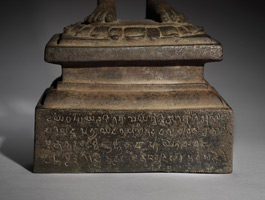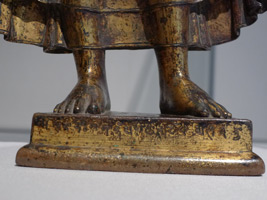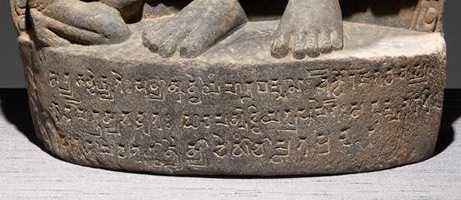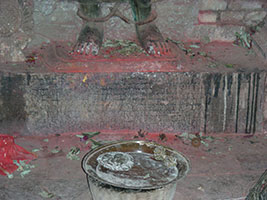asianart.com | articles
Download the PDF version of this article
Back to main article
In this appendix we present the inscriptions found on the four sculptures in this article that bear inscriptions.
These four sculptures are shown below: we use the Fig. nos found in the article. First is the Standing Buddha in the Cleveland Museum of Art, (fig. 1/fig.12) bearing an inscription on its separately cast base of 591 AD. The second is the Standing Buddha in the Kimbell Museum (fig. 2/fig. 15), with an undated inscription on its integral base generally assigned to the 7th century. The third is the stone Standing Buddha of the British Museum (fig. 14) , again with an undated inscription on its integral base, which has been dated between the 6th to the 8th century. And the fourth is the Standing Buddha of Guita, (fig. 4) the subject of this article, which bears two dated inscriptions on its separate stone pedestal, a long inscription on the front with the date 1279, and a short inscription on the rear dated 542.
 Fig. 1/12 |
 Fig. 2/15 |
 Fig. 14 |
 Fig. 4 |
 Inscription 1 Inscription fig. 1/12 |
 Inscription 2 Inscription fig. 2/15 |
 Inscription 3 Inscription fig. 14 |
 Inscription 4 Inscription fig. 4 rear dated CE 542 |
 Inscription 5 Inscription fig. 4 front dated 1279 |
Download the PDF version of this article
asianart.com | articles